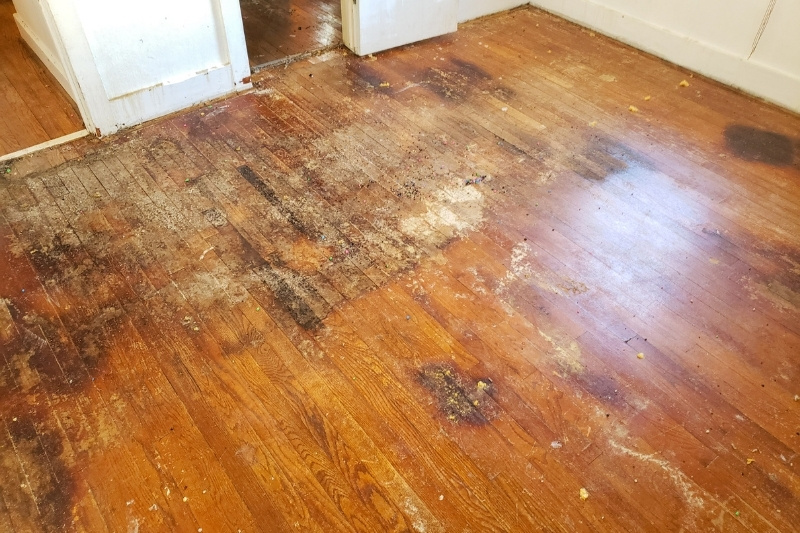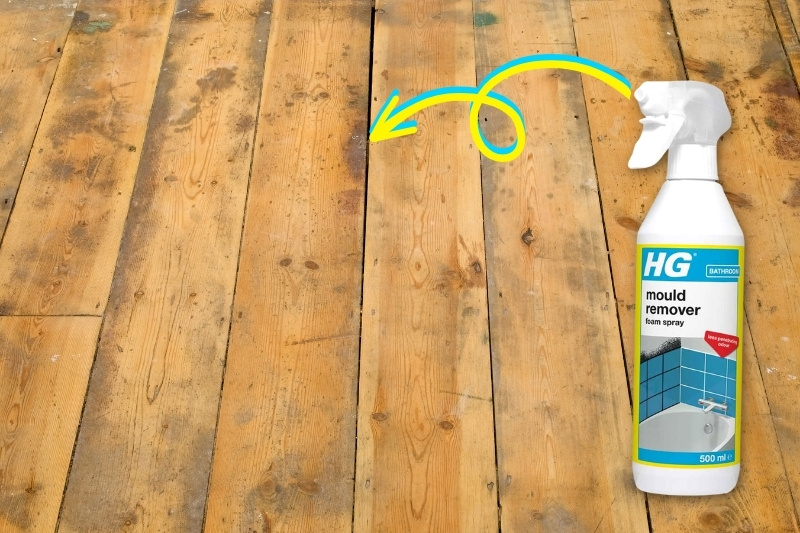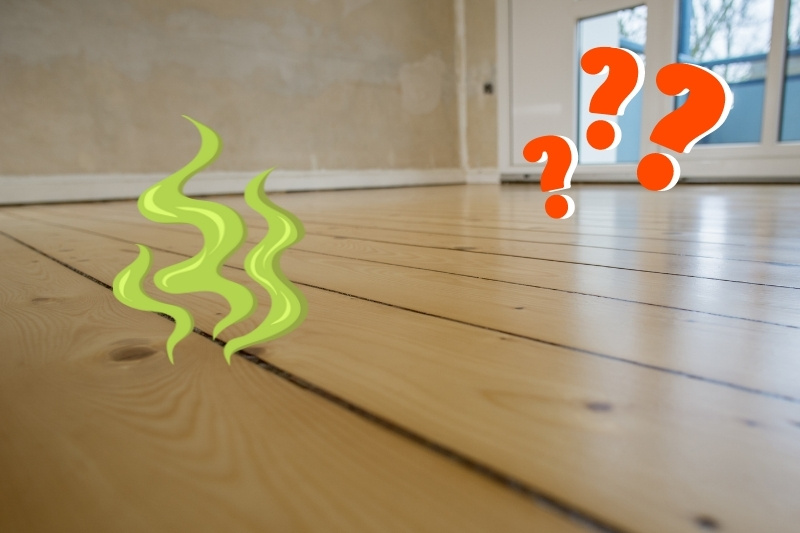Is your home plagued by smells coming up through your floorboards? If so, don’t panic. This is a common issue, especially in older homes and those with wood floors.
The good news is that there are a number of things you can do to combat this problem. In this post, we will take a look at the causes of floorboard smells and some of the best ways to get rid of them.
Plus, we’ll provide tips on how to stop smells from coming through floorboards in the future.
Why Do My Floorboards Smell?
Before you can treat whatever is causing the smell, you’ll need to identify its source. If you suspect the smell is coming from your floorboards, some of the most common culprits are:
1. Damp/mould

Whether you’ve had a leak from a burst pipe or your home has fallen victim to rising damp, you’ll need to remove the resulting mould as soon as the cause of the moisture has been dealt with.
Otherwise, as well as creating a bitter smell under your floorboards, you’ll risk health problems and rotten floorboards that will undermine your home’s structural integrity.
2. A build-up of dust
Often seen in older properties, dust can quickly build up underneath floorboards if they aren’t fully sealed.
Containing everything from outside dirt and dead skin cells to pet hair and pollen, a dust build-up can cause a musty smell to emanate up into your living spaces over time.
Luckily, there are several ways you can resolve this issue, which we’ll cover below.
3. Spillages
Spillages are another common cause of smelly floorboards in family households and those with pets.
Spilt drinks, stale food crumbs and pet urine can all lead to unpleasant smells rising up from your floorboards, as can leaky appliances.
For instance, washing machines with damaged seals or fridges leaking brown liquid from an overflowing drain pan.
4. Pests
This final potential cause is the one that most people dread. Wood-burrowing bugs, rat droppings or worse, a decomposing rodent, can certainly cause a stench. Not to mention lots of damage to your wood flooring. For this reason, they will need removing immediately.
How to Stop Smells Coming Through Floorboards
1. Remove mould

When it comes to removing mould or mildew, you’ll want to use either a specialist mould removing product such as HG Mould Remover Foam Spray or a mix of soap, bleach and warm water.
When used with a scourer or stiff brush, either option will help to break down the spores, remove visible black spots and stop the smell coming through your floorboards.
Don’t forget to open a window and remember that if you lift your floorboards to clean underneath, you’ll need to make sure the area is dry before resealing.
Otherwise, you may experience the same problem again due to the moisture leftover by the cleaning solution.
Once clean, dry the compartment as best as you can with an old rag and then leave to air dry overnight before replacing the floorboards.
Installing a dehumidifier in the room can also help to speed up the drying process by reducing the amount of moisture in the air.
2. Reduce dust under floorboards
To check whether dust has built up under your floorboards, you will need to lift them. You can then sweep or vacuum it out to clean the space and stop the smell.
Adding an air purifier will also remove dust from the air before it can settle into the floor to prevent a reoccurrence.
However, if this isn’t feasible, sealing the gaps between the boards can help to block the odour.
In fact, filling gaps between floorboards is something you should do anyway, to prevent draughts and stop any debris getting trapped underneath.
You can do this using a sealant like polyurethane or a clear resin mixed with sawdust to create an airtight seal.
3. Deal with spillages

No matter what kind of spillage you’re dealing with, the key thing is to clean it up as quickly as possible.
As soon as you notice it, mop as much of the liquid as you can to prevent it seeping into your floorboards and causing a build-up of damp.
Next, clean the floor with a mixture of white vinegar and bicarbonate of soda. As well as reducing the risk of staining, this eco-friendly solution is also highly effective at banishing foul odours.
Afterwards, rinse the wood with a damp cloth and leave to air dry, ideally with a dehumidifier nearby to help remove any excess moisture that the wood has absorbed.
4. Remove pests
If you’ve seen droppings or suspect an infestation due to the smell coming through your floorboards, don’t try to tackle it yourself. Instead, you’ll need to hire a professional.
If you rent, contact your landlord as it is their duty to ensure your home is safe and habitable.
Or, if you’re a homeowner and you’re not sure who to call, ask the Local Authority for advice. They should be able to put you in touch with a reputable pest control company in your area.
Keen to learn more? Read our guide on how to clean floorboards for some more tips.

A proud Yorkshire lass with a love for movies, music and cosy nights in! Once a self-confessed avoider of cleaning, she’s always on the lookout for new ways to make household chores as quick and simple as possible.






